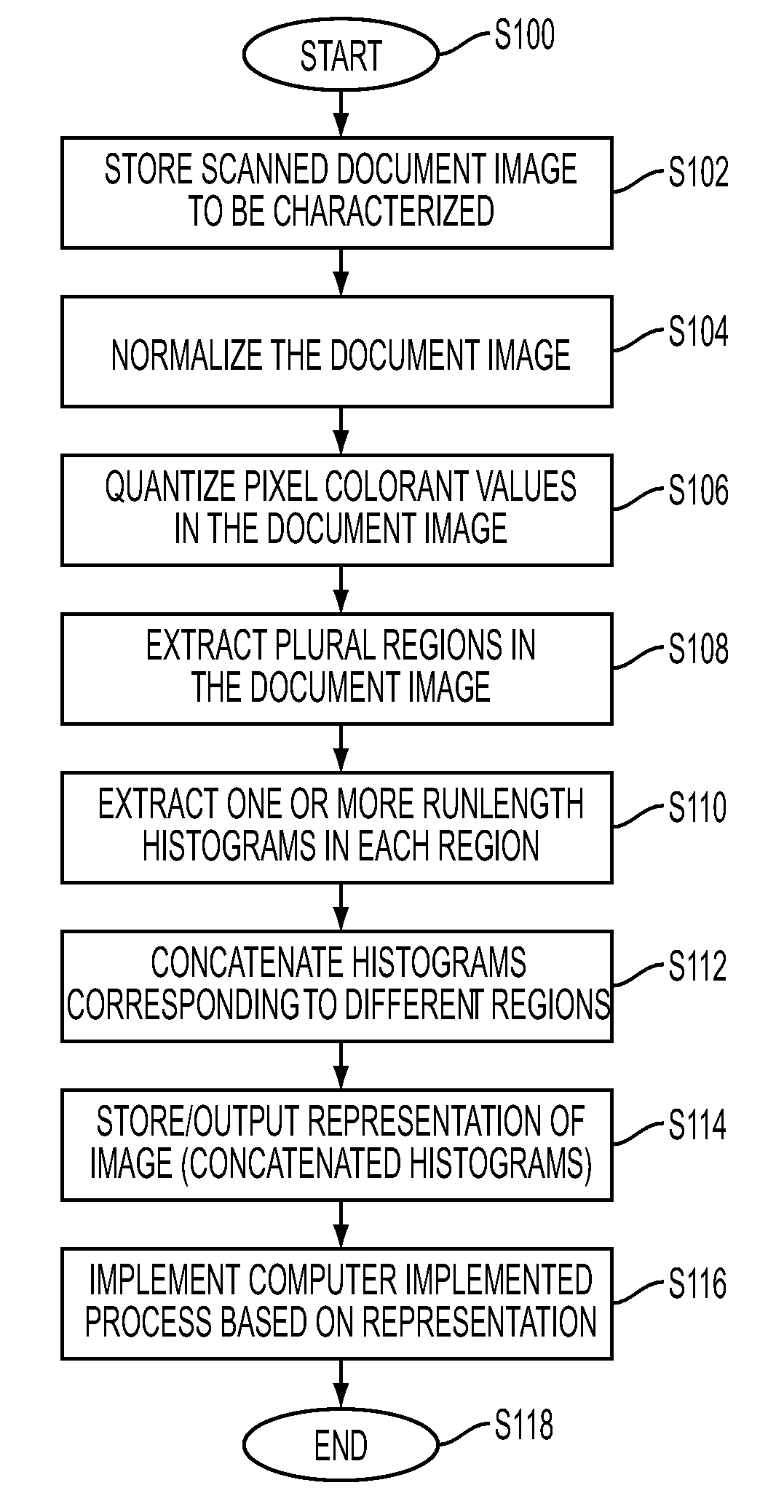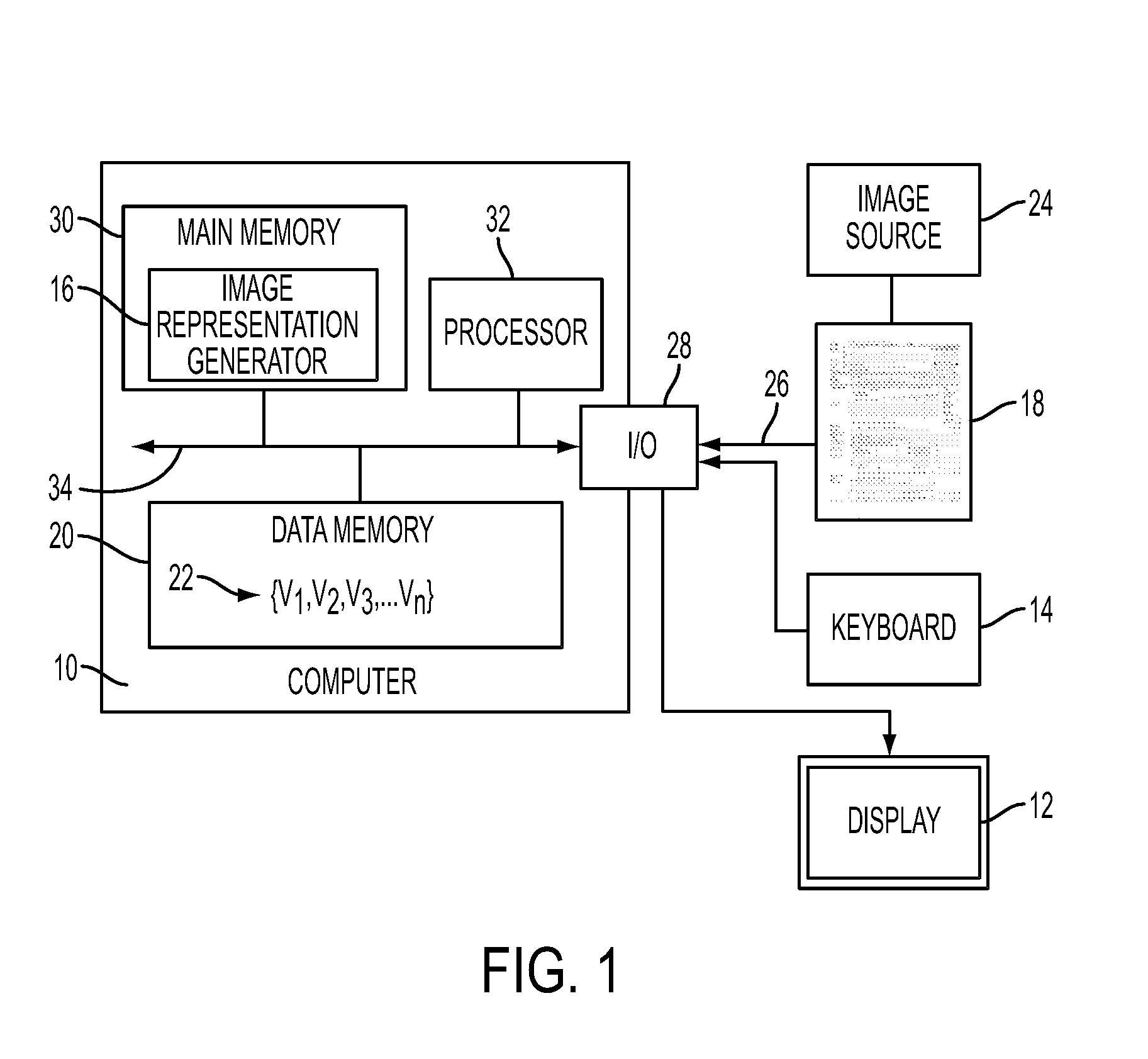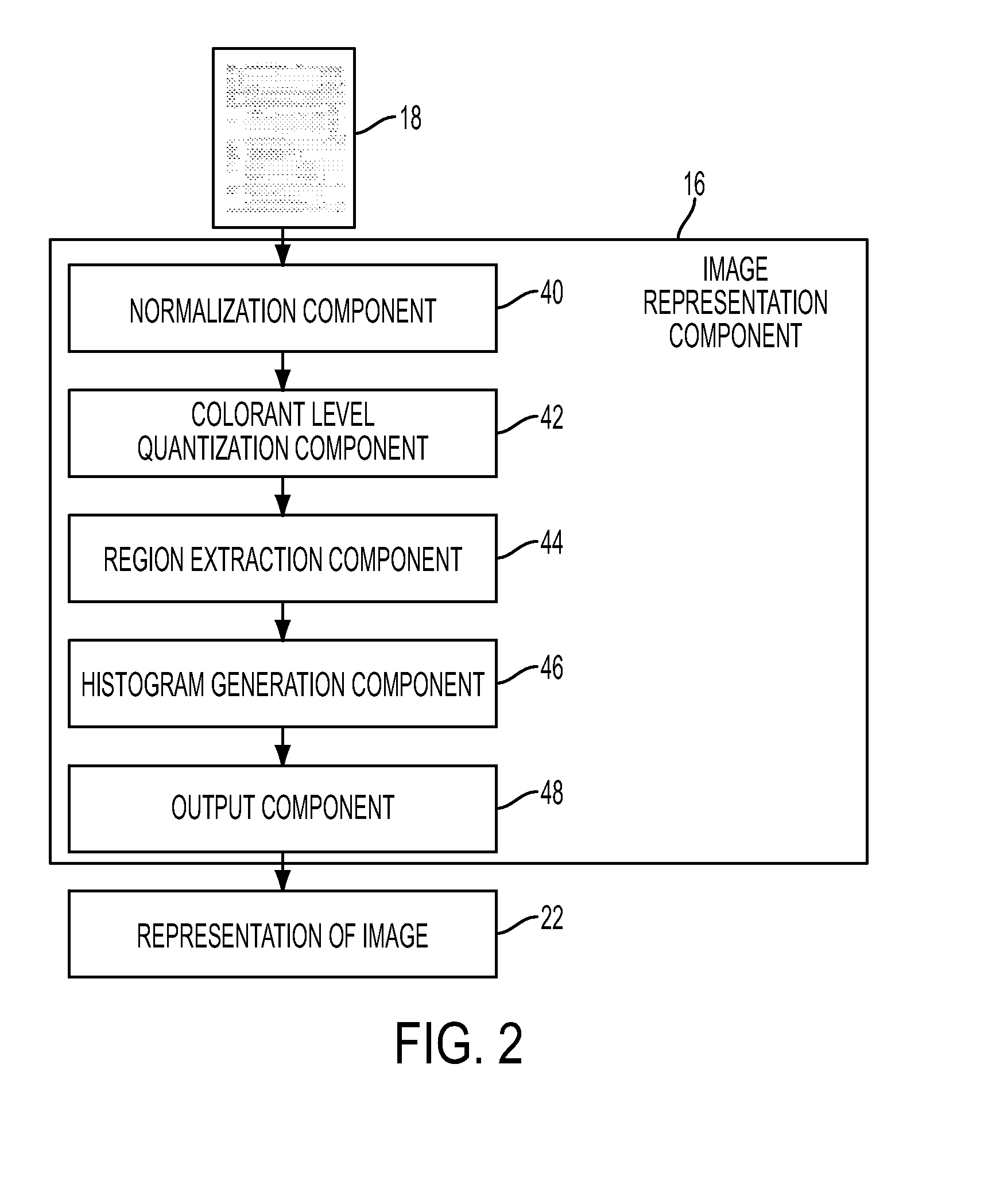Representing documents with runlength histograms
a runlength histogram and document technology, applied in the field of image processing, can solve the problems of manual labor, inability to readily adapt to the case of scanned documents,
- Summary
- Abstract
- Description
- Claims
- Application Information
AI Technical Summary
Benefits of technology
Problems solved by technology
Method used
Image
Examples
example
[0072]The method was tested on databases containing document images, such as tax forms, ID cards, contracts, and medical forms. To simulate the ability of the method to classify documents, a portion of the images in the database were each manually categorized into one of a set of classes. These labeled images were used to train a classifier (based on sparse logistic regression). The trained classifier was then used to classify unlabeled document images and the precision of the method was assessed by manually reviewing the assigned classes. Results for the following three databases are provided by way of example:
[0073]Database 1: this database contained 5,590 images of 20 types of income tax forms. 10 images per category were randomly sampled for training (a total of 200 training images). The remaining images were used for testing.
[0074]Database 2: This database contained over 10,000 images of various types of documents of the type normally processed by a commercial corporation, such...
PUM
 Login to View More
Login to View More Abstract
Description
Claims
Application Information
 Login to View More
Login to View More - R&D
- Intellectual Property
- Life Sciences
- Materials
- Tech Scout
- Unparalleled Data Quality
- Higher Quality Content
- 60% Fewer Hallucinations
Browse by: Latest US Patents, China's latest patents, Technical Efficacy Thesaurus, Application Domain, Technology Topic, Popular Technical Reports.
© 2025 PatSnap. All rights reserved.Legal|Privacy policy|Modern Slavery Act Transparency Statement|Sitemap|About US| Contact US: help@patsnap.com



